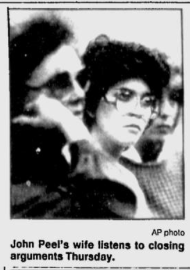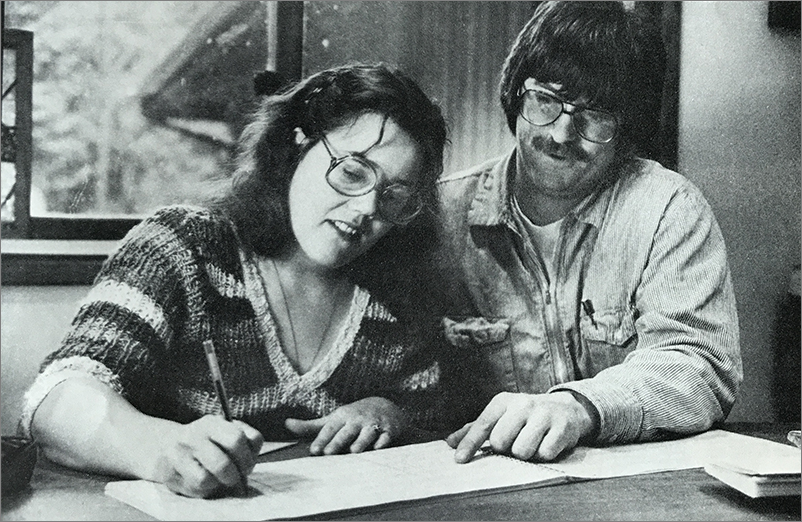For the second jury in John Peel’s murder trial, it was a constant parade-shuffle in and out of the courtroom. It was accompanied by a disorienting display of animosity. The opposing sides were never really friendly: Weidner’s defense depended on attacks against the State. So they had merely moved their distaste for one another to a new courtroom.
In environments of mutual disgust, however, people say unfortunate things. Judge’s are loath to have those things on display in their courtroom. Hence the shuffle.
Make-Believe
There is nevertheless something of the make-believe about this process. The notion that the jury shuffle contributed to the pursuit of truth and justice in the Peel case is… debatable. A perfect trial — like the ones we see on TV — has a through line and narrative.
Phillip Weidner’s primary job in this trial, however, was to sow doubt and disrupt the narrative.

In the real world, jury trials are sometimes only tangentially after the truth. Rather, they are about two dichotomous versions of the truth. There’s the State’s version on offer, and then the defense alternative. It’s all moderated by the judge, who can determine what’s in and what’s out (subject to the review of higher courts).
The jury, therefore, has to choose and, through that choice, fashion a sense of justice.
In a murder trial, that task is somewhat easier. The standard for conviction is very high. “Beyond a reasonable doubt” has been parsed by legal scholars for eons. In plain English, it says you, as a juror, have to be very damn sure the facts presented support conviction. Else, find the defendant not guilty.

Banned Statements
But even after the ban imposed on Phillip Weidner’s statements during closing arguments, he had other ways to make them.
“No comment or argument that the defense attorney are outnumbered or that the attorneys or the defendant and his family are disadvantaged, financially or otherwise, in any way by this trial.”
Assertion Banned at Second Peel Trial
This leads us to a striking coincidence. By some chance — perhaps by way of a willful ordering of his schedule — Judge Thomas Schulz found himself in Juneau for the closing stages of the second trial. Remember, Schulz himself had said, “I’m not gonna die if I don’t have to do this fucker over again.” But he couldn’t help himself. There he was, sitting in Carpeneti’s courtroom.

Taking on the State
What Schulz witnessed was Phillip Weidner’s final argument on display. Not in the words he said. It was, rather, a physical display that served as a tome in and of itself.
On the prosecution side was a battery of lawyers: Henry, Blasco, Guaneli and Gullufsen.
On the defense side, Phillip Weidner sat alone with his client.
For Schulz the symbolism of the message was clear: Phillip Weidner was cultivating the notion that he was single-handedly taking on the money and power of the State. That’s a powerful notion. In Alaska, there is a longstanding distrust of government, grounded in the oversized role it plays in local affairs. Locals are, moreover, often fiercely independent. Alaska itself forces a self-reliance more often seen in frontier environments. The Alaska Bush is never far away.
Phillip Weidner would ride those sentiments as hard and fast as he could.
Excerpts from the unpublished original manuscript, “Sailor Take Warning,” by Leland E. Hale. That manuscript, started in 1992 and based on court records from the Alaska State Archive, served as the basis for “What Happened in Craig.”
Copyright Leland E. Hale (2021). All rights reserved.

Order “What Happened In Craig,” HERE and HERE. True crime from Epicenter Press.